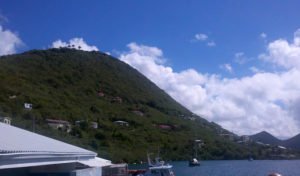 J. Gibson McIlvain has been shipping material to the Caribbean for some time now. We service a lot of builders and contractors from the Virgin Islands and Bermuda to the Bahamas and the West Indies. Our large, on the ground inventory of a huge variety of hardwoods, softwoods, and plywoods means we can ship much faster than the island brokers that these customers rely on normally. A nice bonus is that our prices end up lower, because we are the direct importers and buyers, thus eliminating all those middle man charges.
J. Gibson McIlvain has been shipping material to the Caribbean for some time now. We service a lot of builders and contractors from the Virgin Islands and Bermuda to the Bahamas and the West Indies. Our large, on the ground inventory of a huge variety of hardwoods, softwoods, and plywoods means we can ship much faster than the island brokers that these customers rely on normally. A nice bonus is that our prices end up lower, because we are the direct importers and buyers, thus eliminating all those middle man charges.
Good pricing, millwork capability, and fast delivery are nice; however, if the material shows up with damage or not at all, these elements mean nothing. We have learned the hard way that extra measures need to be taken when the project site is in the islands.
Delivering a construction project on time and within budget is a truly stressful experience. Imagine now that your project is on a Caribbean island, where just getting the materials is difficult. Long lead times for lumber delivery are common with little to no recourse if the material is delivered late or damaged. Even if a claim can be made, the delays to the project and numerous costs that arise while waiting for new material to arrive is enough to ruin a build. We have seen material accounted for upon departure, yet half the order is missing when it arrives to the customer. Sometimes the outer layer of lumber in an order has faded or oxidized in transit or it has been damaged by forklifts or shifting inside the shipping container. Sometimes the lumber isn’t damaged at all, but held in customs because an i wasn’t dotted or a t crossed specific to the destination port. Any number of things can derail the order between our yard and the customer’s job site. Armed with our first person experience, having seen all of these things happen, we are constantly improving our shipping process, so that our high availability and good pricing isn’t tainted by material that shows up late and/or damaged.
Exposure to the Elements
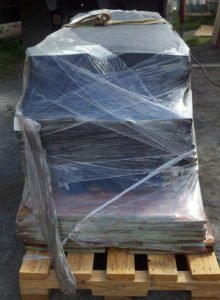
“give it time, and it will match all the other boards”
This is a hard one to control, because you just can’t stop the sun, and who knows how long the lumber will be exposed to it during transit. Inclement weather is another thing you can’t predict, but a lot of water can definitely cause warping in a pack, when only the outer layers get wet.
We have done some research and tried a few things, until we decided upon a UV wrap that essentially shrink wraps your entire lumber order, protecting it from the rain and fading rays of the sun. Now your freshly milled lumber or crown moulding will arrive looking just as it did right out of our millworks.
Damage At the Port or Forwarder
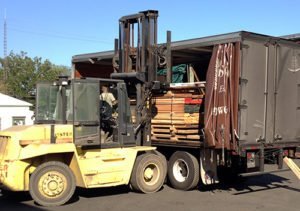
This comes down to packaging on our part. The more we can build up a crate around the material to protect it from damage as it is loaded and unloaded from containers, the better. For that matter, if we have done our job, the order cannot be separated, and the above mentioned UV wrap can help protect it if left outside.
Missing in Action at the Port
As much as we hate to acknowledge it, sometimes port security isn’t what it should be in some of these island locations. Material goes missing, especially if it is small enough to be carried off in a pickup truck. I wish I could say that this has never happened to one of our customers, but that just wouldn’t be true.
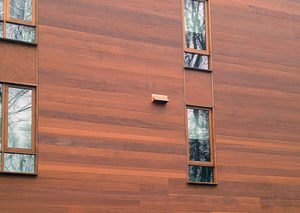
About a year ago, one of our builders called us, stating that the 10′ S4S Sapele he ordered was left out of the shipment. We found this odd, because we remembered packaging it separately in order to protect it better, and adding it in between two other layers of rough sawn material. Sure enough, what was delivered to the customer were two packs of rough sawn material with nothing in between. It seems that the separate packaging was an invitation for this shipment to get broken up either at the freight forwarder or at the final port. It is still unclear whether that surfaced material was stolen or just got lost in a warehouse somewhere. Needless to say, the material was marked as received at the port, and there wasn’t much recourse other than ordering more material. Fortunately, since we had the material in stock, we were able to run a new order through the millworks and get it shipped out within a few days.
The lesson was learned, however, and now we always package multiple product orders as one unit that cannot be easily separated by the shipping entities. This is a mixture of the above elements of crating and wrapping to protect, but also making it impossible to remove one smaller part.
Customs and Tax Levies
Every port has a different dynamic. Some run really smoothly, while others are amazing to imagine everything actually gets to the final destination. Each country will have different regulations and taxes that can apply, and if the inbound shipment doesn’t meet those regulations, the shipment can be held and additional costs can be applied. Little details, like clearly labeling where the product was made or listing the ship to address under the homeowner, can help ease the order through customs and avoid some needless additional fees. Today, we are up to speed on most of these local regulations and do our best to ensure delays like this don’t hinder an on time delivery.
What Have We Missed?
In the end, it is impossible to anticipate everything that can happen to the lumber between our yard and some far flung Caribbean island. We will continue to learn the hard way, but we continue to find preventive solutions. Solutions like the type of container or flat rack that we ship the material in, foam packaging for better protection, and much more are constantly in test mode around here. Ultimately, feedback from our customers who live and work in these areas is invaluable, and we employ a representative in the islands who can make site visits and who intimately understands the local regulations and eccentricities. Add all of this together, and hopefully we can prevent the costly delays that make construction in Caribbean such a difficult proposition.

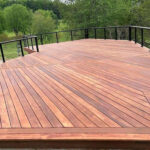
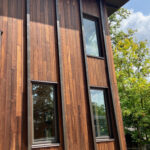






Leave a Reply